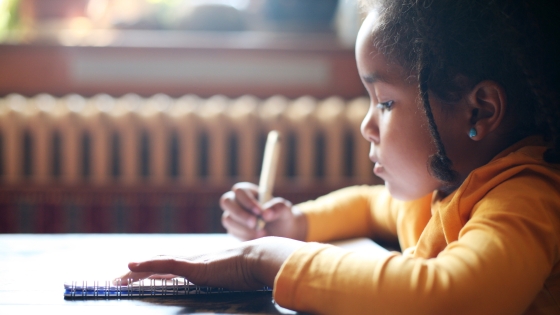Authentic assessment tools allow educators to capture children’s strengths and weaknesses in a naturalistic manner as a means to inform both individualized and classroom-wide instruction. Using authentic assessment, teachers document and evaluate children’s skills, knowledge, and behaviors using everyday experiences, activities, and products. Arguably, authentic assessment allows teachers to best capture children’s “true abilities” as children are not required to demonstrate their knowledge or skills “on demand” (as is the case with direct assessment), but rather children have many opportunities to show their capabilities. Despite its benefits, this work can be challenging as many educators find that collecting and scoring authentic assessment data on a daily basis is time consuming.
Thus, the 2014 Forum on Children & Families, Utilizing Authentic Assessment with Preschoolers: Implications for Practice aimed to open a dialogue about the benefits of using authentic assessment, as well as how to address the challenges it poses in the classroom. Attendees consisted of mostly teachers or education directors, although program leaders, public-agency personnel, and researchers were also in attendance which allowed for multiple perspectives on the topic.
Authentic Assessment Process
The process of authentic assessment is circular. The first step of the assessment process is to observe children within a natural classroom setting such as during circle time or in the block area. Educators then collect anecdotal evidence, pictures, videos or work samples highlighting the child’s skills. Next, educators rate children’s competencies and skills across a variety of developmental domains using the anecdotes and documentation they have collected as evidence for these abilities. Based on both class-wide and individual reports of children’s abilities, educators are able to identify areas of strength and weakness and can then incorporate this information into their lesson planning.
Anecdotes Should Be
- Specific: Describe the scene and the child’s behavior as you would to someone who has no prior knowledge about the child
- Concise: Report only the relevant information about the child and situation
- Objective: Try not to make any assumptions about what you are observing
- Strength Focused: Report only what the child is capable of doing, not what they cannot do
Strategies for Observing Children
- Keep binders with divided sections or index cards for each student/ developmental domain
- Utilize technology!
- Identify portions of your lesson plan for observation
During the forum, each table of educators was given the opportunity to have an honest conversation regarding both the practice of authentic assessment in the classroom and the support they need in the assessment process. Suggestions and comments were recorded on paper by one member of the group. Facilitators then collected the papers and created a comprehensive list of all the information recorded by the educators. The following list was the presented back to the educators.
Best Practices for Collaboration Between Education Directors and Teachers
- Respect one another
- Allow time for teachers to complete the assessment
- Have directors provide coverage for Head Teacher
- Rotate computer use among teacher
- Ongoing collaborative trainings
- Give feedback about lessons plans
- Provide time to practice inter-rater reliability
- Have smaller deadlines throughout the checkpoints
Challenges Teachers Face in Using Authentic Assessment
- Time-management
- Confusion surrounding the tool
- How to interpret outcome data
- Computers/internet
- Computer-literacy among teachers
Recommendations for Addressing Impediments
- Motivation from directors
- Allow time and extra training for teachers to become more familiar with tools
- Increasing prep-time
- Increase interagency communication
- Focus on using results to inform your lesson plans so that assessment and prep time become integrated and more meaningful

